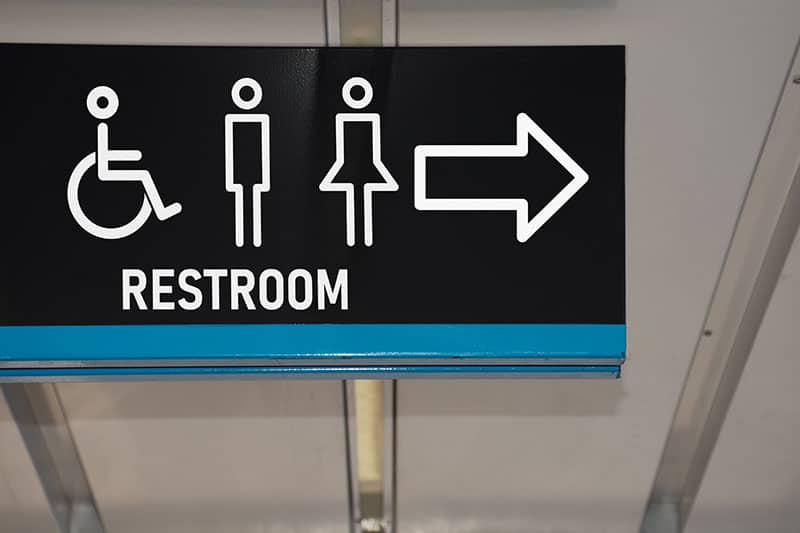The Importance of ADA Compliant Signs for Business Accessibility

In today’s business environment, inclusivity and accessibility are essential for providing equal access to services for everyone. One of the most important ways to ensure that your business is welcoming to all is by using ADA (Americans with Disabilities Act) compliant signs. These signs help individuals with disabilities navigate your space easily and independently. In this blog post, we’ll explore why ADA-compliant signs are crucial for business accessibility, compliance requirements, the benefits for both customers and businesses, and how to implement ADA signage effectively.
What Are ADA Compliant Signs?
ADA-compliant signs are specially designed to ensure accessibility for people with various disabilities, such as those who are visually impaired or have limited mobility. The ADA, enacted in 1990, mandates that businesses provide reasonable accommodations to people with disabilities, including the use of compliant signage.
To meet ADA standards, signs must follow specific guidelines:
- Braille and tactile text: For visually impaired individuals, signs must feature raised characters and braille. This allows those who rely on touch to read the signs and navigate the business premises.
- Contrast and color: The background and characters on the sign must have high contrast to ensure readability by people with low vision.
- Height and location: ADA-compliant signs should be mounted in locations that are easy to access, generally at a height between 48 and 60 inches above the ground.
- Non-glare finish: Signs must have a matte or non-glare finish to make them readable in different lighting conditions.
These specifications ensure that ADA-compliant signs are universally accessible and functional for all visitors.
Why ADA Compliant Signs Are Essential for Business Accessibility
Having ADA-compliant signs isn’t just about adhering to regulations; it’s about fostering inclusivity and ensuring that your business is accessible to all potential customers, regardless of their physical abilities. Here’s why ADA-compliant signs are essential for accessibility:
- Providing independence: ADA-compliant signs allow people with disabilities to independently navigate your facility. Whether it’s locating restrooms, exits, or specific rooms, these signs offer crucial guidance.
- Enhancing inclusivity: By implementing ADA-compliant signs, businesses create an environment where everyone feels welcome and valued. This can help build trust and loyalty among customers.
- Reducing frustration: For those who have disabilities, navigating spaces without proper signage can be frustrating and disorienting. Clear, compliant signage makes their experience smoother and more enjoyable.
- Complying with legal standards: The ADA is a federal law, and businesses that fail to comply can face legal consequences, including fines and lawsuits. By using ADA-compliant signs, businesses protect themselves from potential liabilities.
In short, these signs go beyond legality—they represent a commitment to treating all customers equally.
The Business Benefits of ADA Compliant Signs
Beyond accessibility, ADA-compliant signs offer several key advantages for businesses. Implementing proper signage can improve customer satisfaction and even boost your bottom line.
- Broaden customer base: More than 61 million Americans live with disabilities, according to the CDC. By making your business accessible with ADA-compliant signs, you open your doors to a larger segment of the population.
- Improve brand image: A business that is accessible and compliant shows that it cares about its customers and is dedicated to providing a positive experience for everyone. This can enhance your brand’s reputation and attract more clients.
- Avoid penalties: Non-compliance with ADA regulations can result in costly fines and damage to your business’s reputation. By proactively installing ADA-compliant signage, you avoid these risks and ensure your business is protected.
- Increased foot traffic: Accessible businesses often attract more foot traffic, as people with disabilities feel comfortable visiting a place where their needs are met. This inclusivity can lead to repeat customers and word-of-mouth recommendations.
- Fostering a safer environment: Proper ADA signage doesn’t only benefit customers with disabilities; it can also improve overall safety for all customers and staff by clearly indicating exits, hazardous areas, and other essential information.
Incorporating ADA-compliant signs into your business not only helps your customers but also delivers a solid return on investment by protecting your brand, avoiding penalties, and enhancing customer loyalty.
How to Implement ADA Compliant Signs in Your Business
Implementing ADA-compliant signs in your business requires an understanding of ADA guidelines and a strategy for incorporating them into your space. Here’s a step-by-step approach to ensure compliance:
- Conduct an audit: The first step is to assess your current signage and determine whether it meets ADA standards. An accessibility audit can help you identify areas where improvements are needed.
- Understand placement requirements: ADA-compliant signs must be placed at specific heights and locations. For instance, signs should be mounted on the latch side of the door for rooms or restrooms and at the right height for easy visibility and reach.
- Choose the right materials: ADA-compliant signs must have tactile elements, including braille, raised letters, and a non-glare surface. Work with a professional sign maker who understands ADA regulations to ensure that your signs meet all standards.
- Use clear, simple wording: The language on ADA-compliant signs should be easy to understand. Avoid jargon and use universally recognized symbols where possible (e.g., for restrooms or exits).
- Train your staff: Your employees should be aware of ADA requirements and how to assist customers with disabilities. This ensures that your entire team is prepared to uphold accessibility standards.
- Update regularly: Laws and guidelines surrounding ADA compliance can change, so it’s important to stay informed and update your signs as necessary. Regularly review your signage to ensure it continues to meet the latest requirements.
By taking these steps, you can create a welcoming, accessible environment for all visitors, ensuring that your business stays compliant and inclusive.
ADA-compliant signs are a critical component of making your business accessible and inclusive to all individuals. They not only ensure legal compliance but also improve the overall experience for people with disabilities by allowing them to navigate your space with ease. From enhancing independence and inclusivity to improving your brand’s reputation, ADA-compliant signage is an investment that benefits both customers and businesses alike. By conducting a signage audit, understanding placement requirements, and working with professionals, you can ensure that your business meets ADA standards and welcomes all customers with open arms. Request a quote today!
Three Locations to Serve You
Charleston, SC
(843) 552-2626
Columbia, SC
(803) 731-2001
Jacksonville, FL
(904) 724-4321



0 Comments